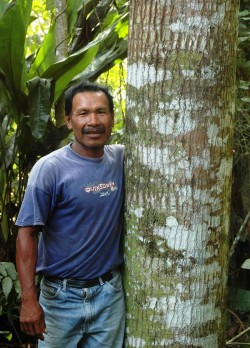By Frank Hajek, Executive Director of Nature Services Peru

In June I attended the Global Landscapes Forum: The Investment Case meeting in London. Many good ideas were shared, networks strengthened and many new contacts for our company Nature Services Peru made.
But overall, the meeting left me worried.
Worried about the growing disconnect between financiers and the 100 million+ land use projects they are looking to finance, and the reality of making a sustainable return from natural landscapes.
I am not questioning the need for fresh private investment in landscape management; millions of landholders, communities and private organizations all over the world wish to manage natural landscapes sustainably and do not have the capital and know-how to do so.
And I’m not questioning either the investments in ‘sustainable’ palm oil, soy, cattle, timber plantations or other agricultural commodities. We know that these can make money and are therefore investable.
But what is the proven business model for sustaining natural landscapes and wilderness areas?
Even the most patient capital investors, need to be paid back. How will natural ecosystem holders be able to do that? Generating debts that lead to liquidating natural assets must clearly be avoided.
MONEY AND NATURE
Much current thinking points to monetizing not just the products, for which markets have been working for hundreds of years, but also the services provided by these landscapes.
Yet concrete examples of financial return from integrated management of products and services are scarce.
If we had these examples, I doubt we would be losing forests, natural grasslands and other ecosystems at the current alarming rates.
With an estimated US$100 billion of institutional investment in the agriculture and forestry sector currently and a FAO call for a further US$200 billion by 2030, a goal for investing around US$10 billion annually in natural landscape management should not be unrealistic.
To achieve this, and keeping it simple for illustrative purposes, it means around 50-100 investment funds or large companies each deploying 100-200 million would be needed annually.
The finance industry is large and mature and I believe, could spin off the required 100 investment funds/companies relatively quickly if the opportunity for returns was there.
But the opportunity will not arise – not in the near future at least – for a simple reason: the absence of local landscape management companies through which to invest.
The millions of NGOs and communities around the world fighting to sustain ecosystems cannot do that; their charters and institutional logics prevent them from generating returns for third parties.
NEEDED: LANDSCAPE MANAGEMENT COMPANIES
I am not saying there is no progress.
Global movements like B Corporation are starting to shed light on the importance of achieving combined economic, social and environmental returns.
Funds like EcoEnterprises are breaking ground by investing in companies with multiple conservation, restoration and sustainable production objectives.

Newer investment groups like Althelia and Moringa are following suit, and funds like Permian Global are going a step further by taking a carbon services only approach.
But all these companies are spending a considerable amount of time on due diligence of their investments and limited funds have been deployed to date; emerging local landscape management institutions and the realities of managing small, diverse businesses require it.
I believe many more companies like Nature Services Peru, with a mandate to manage landscapes for multiple benefits, are needed to take landscape investment to scale.
But how many?
Most landscape management companies I know are young and I dare to guess that, on average, have a capacity to responsibly invest US$1 million annually in growing their business.
So that means we need around 10,000 companies, and we need them fast.
About the author

About Nature Services Peru
Nature Services Peru is a Peruvian company dedicated to strengthening the sustainable management of ecosystems. We specialize on social, environmental and market aspects of natural landscape management, with a view to increase returns and reduce risks for both holders of natural assets and investors in ecosystems. Through our work we help to sustain biodiversity and make a positive contribution to climate change mitigation and adaptation. We work under partnership arrangements with indigenous communities, forest concessionaires and the State and in alliance with Servicios Ecosistémicos Perú (SePerú), a non-profit conservation organization focused on capacity building in south-eastern Peru.



